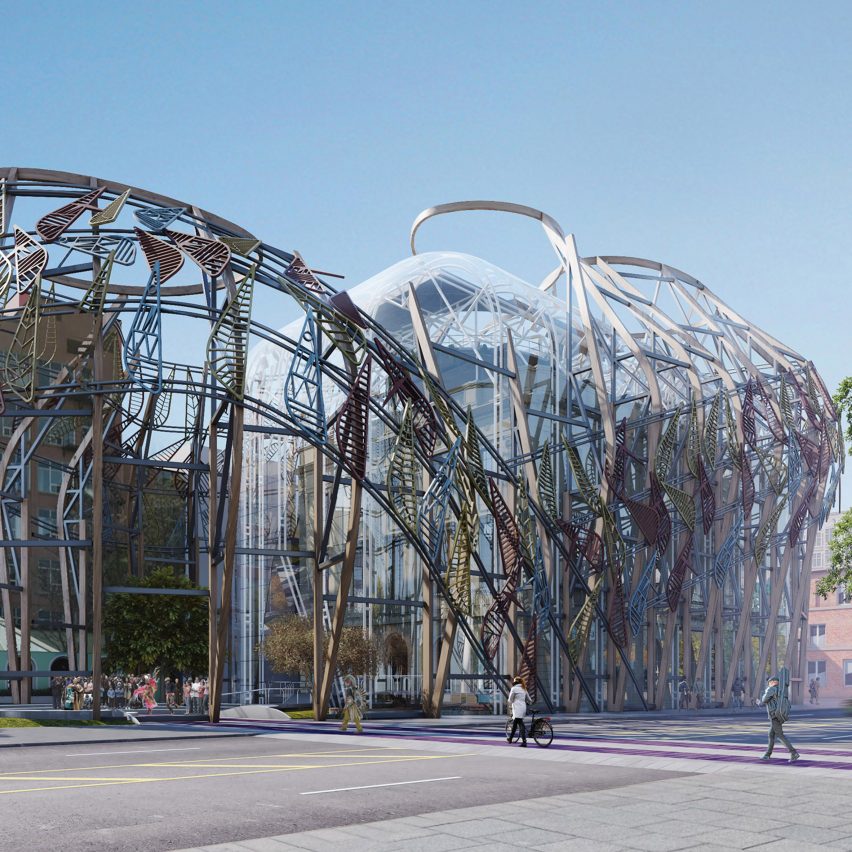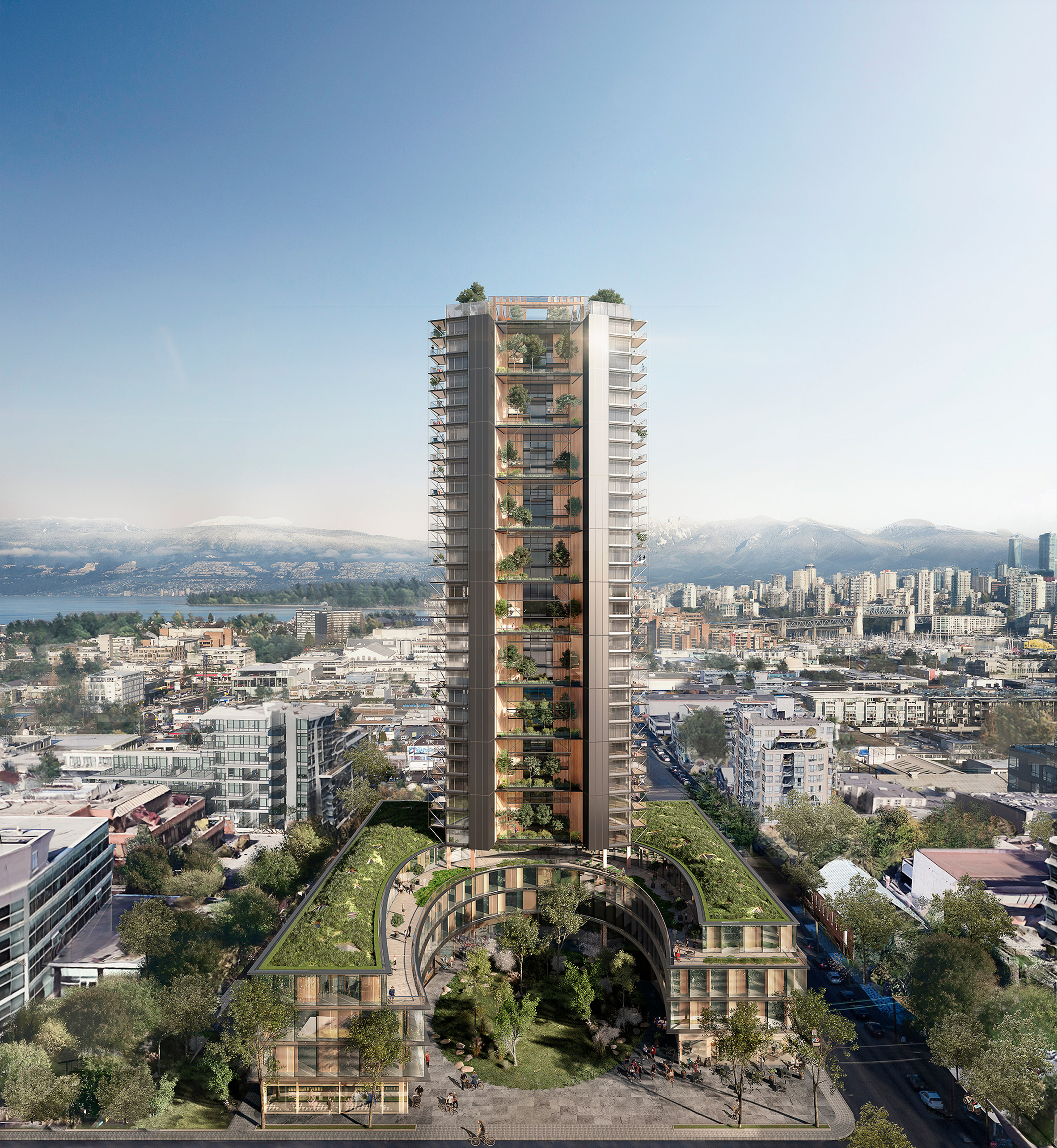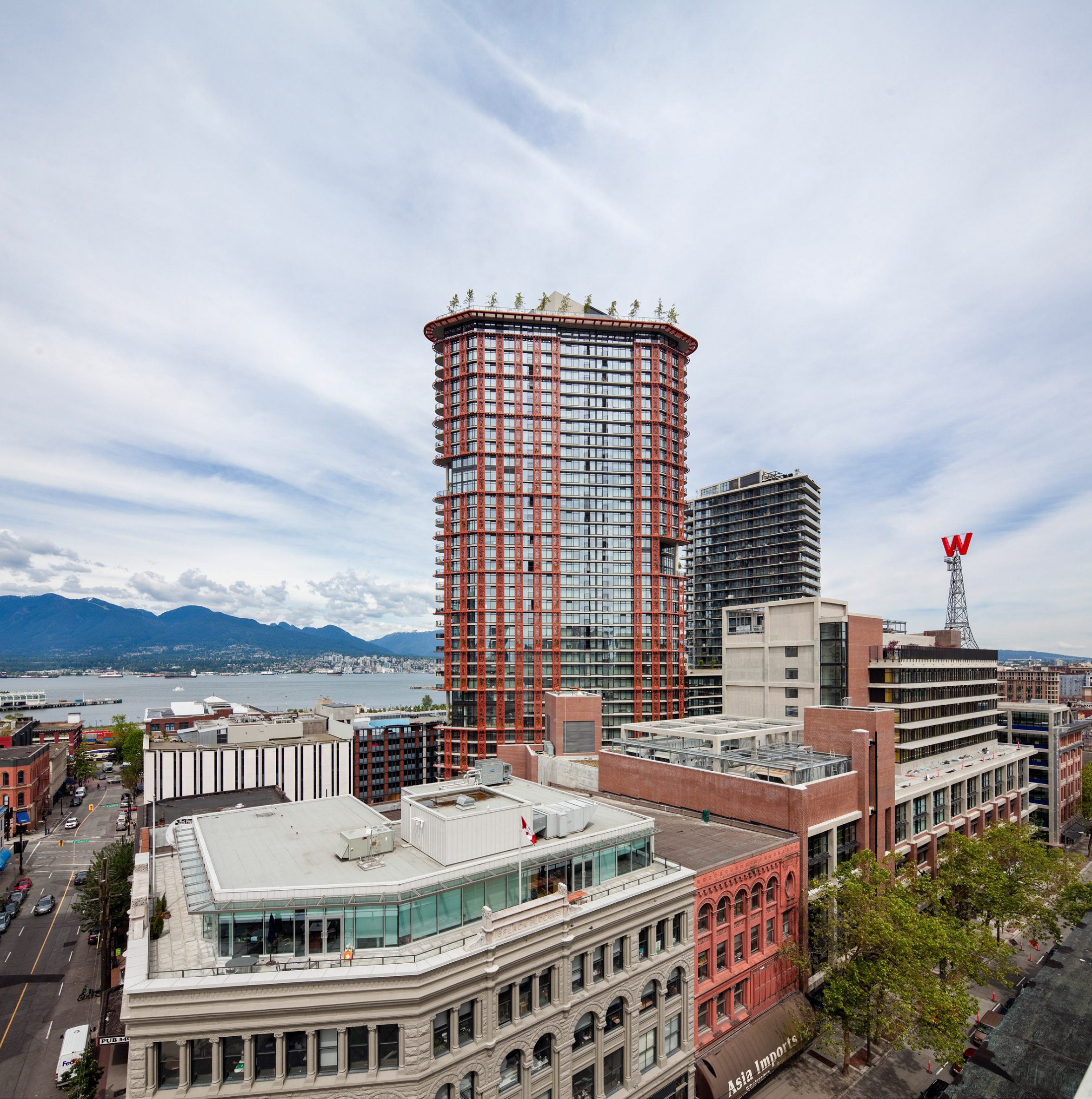
Architects, designers and policymakers should join forces to write a manifesto for Canadian design that platforms indigenous communities, according to Andrew King of architecture studio Lemay.
A cohesive and inclusive Canadian design identity would help unify the country around shared values, promote local traditions, skills and materials and distinguish the country from its southern neighbour the USA, King said.
So far, he argued, similar efforts have lacked the necessary assertiveness.
“We do it in a very Canadian, muted way,” King explained during a live panel talk broadcast on Dezeen. “It’s very quiet and humble, whereas we should be a little bit more aggressive.”
Sustained investment needed to export Canadian design
Leslie Jen of Toronto practice Superkül agreed that very little is known of Canada’s design culture abroad.
“A critical part of that is the lack of government funding we have relative to other countries,” she said.
To combat this, King is hoping to work with Jen and architect David Fortin, as well as design firms and schools across the country, to formulate a manifesto for a “pan-Canadian identity”.

This should be exported around the globe with support from the government, he argued, much like Denmark has made a concerted effort to raise the profile of its firms abroad.
“We have a strong presence of Danish architects right now in Toronto because the Danish government invested millions of dollars in projecting Danish practitioners into the Toronto market,” said King, who is chief design officer at architecture firm Lemay.
“And we, in Canada, should be doing that in other places.”
Country grappling with its colonial past
Plans for the manifesto were formulated during a live talk featuring King, Jen and Fortin – the first indigenous director of a Canadian architecture school and one of the architects behind the forthcoming Indigenous Peoples Space on Ottawa’s Parliament Hill.
The panellists argued that, although it is often conflated with American design, the Canadian approach is distinguished by a more European focus on social design and timber construction while increasingly integrating the country’s aboriginal population into the design process.
“There’s a cohesive Canadian design culture,” King explained. “I think there’s an understanding that we exist in a world that has links to Northern Europe and it has increasingly and extremely important links to our indigenous community.”

“A strong social agenda drives many of Canada’s best architectural practices,” agreed Jen, author of Canadian Architecture: Evolving a Cultural Identity.
“Many projects exhibit an ethos of inclusivity, designed for diverse cultures including immigrant communities and indigenous groups.”
According to Fortin, architecture in Canada was historically used as a means of ostracising the country’s native peoples after the land was colonised by the English and French at the end of the 15th century – a fact that is still visible in the country’s urban fabric today.
“We mostly still live and design in cities that stand as monuments to land dispossession and the attempted genocide of our indigenous peoples,” he said.
Until 1961, indigenous architects had to renounce their heritage in order to graduate from university and even today, Fortin estimates there are only around 18 indigenous practitioners in the country, which he said represents “about 0.2 per cent” of architects.
Canadian design community working to uplift indigenous voices
But design schools, including the McEwen School of Architecture in Ontario where Fortin is an associate professor, increasingly have a “huge mandate” to integrate indigenous students and teachings into their curriculum, which advocate a built environment that exists in symbiosis with nature rather than exploiting it.
“I really believe that there’s a lot of listening that still needs to take place,” Fortin added. “But there’s some hope to figure out how indigenous people might actually see themselves in the built environment in future generations.”
With this aim, he said public sector projects across Canada are calling for new buildings to reflect local indigenous communities in their request for proposal (RFP), with the Art Gallery of Nova Scotia designed to express Mi’kmaq culture and the Saskatoon Public Library drawing on traditional Métis architecture.
This hyper-local approach reflects not just “the rich diversity of indigenous approaches to design” but also Canada’s many diverse landscapes, Fortin said.
“When you get off the plane in Saskatoon, it shouldn’t feel like it does in Ontario or in Yellowknife,” he said.
Timber construction “knits together” different communities
Expanding on this idea of regionality, Jen argued that timber construction is another key pillar of the Canadian design identity, as forests cover 38 per cent of the country’s land area while cities from Vancouver to Toronto are home to some of the tallest timber towers in the world.
“[Timber] is a sustainable and renewable natural resource that can be locally sourced due to its abundance in Canada, reducing the buildings’ carbon footprint,” Jen explained. “It’s reflective of the climate and the natural environment.”
“The expression of wood is something that knits us together,” King agreed. “It talks about indigenous culture to a certain degree and it has links across to Northern Europe and Scandinavian architecture.”
Prominent industry figures including Pakistani architect Yasmeen Lari and designer Julia Watson are increasingly arguing that practitioners should look to tribal communities for insight on how to create buildings that regenerate rather than exploit nature.
“There are so many examples,” Watson told Dezeen. “They have increased biodiversity, they’re producing food, they’re flood mitigating, they’re resilient in terms of foreshore conditions, they’re cleaning water, they’re carbon sequestering.”
“They have all of the natural qualities that we’re really interested in, in terms of ecosystem services, but they’re completely constructed by man.”
The top render is by David Fortin Architect, Wanda Dalla Costa, Winnie Pitawanakwat and Eladia Smoke.
The post It's time to forge a "pan-Canadian" design identity based on indigenous values says Andrew King appeared first on Dezeen.
